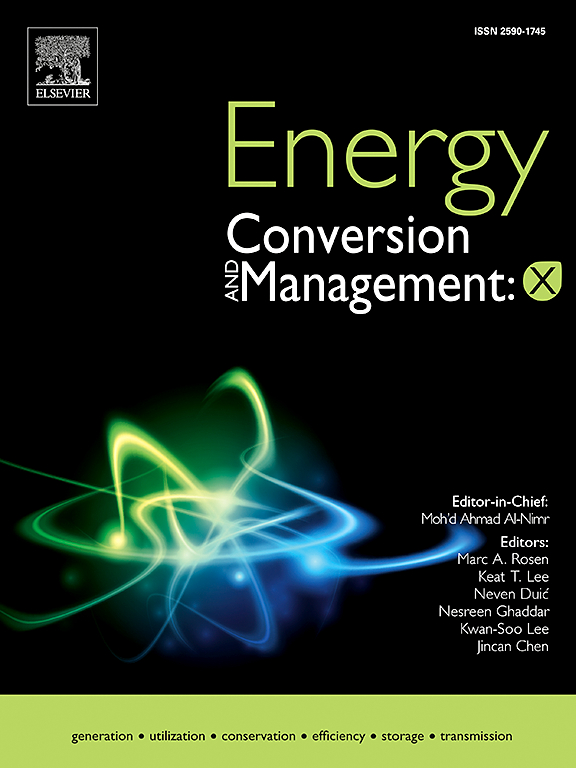Optimal configuration of integrated energy system considering heat enhancement and combined operation of low head seawater pumped storage and reverse osmosis
IF 9.9
1区 工程技术
Q1 ENERGY & FUELS
引用次数: 0
Abstract
The remote coastal areas face difficulties due to energy shortages and insufficient freshwater resources. To reduce the energy consumption of reverse osmosis desalination in coastal areas, this paper proposes an optimal configuration method of integrated energy system considering heat enhancement and combined operation of low-head seawater pumped storage and reverse osmosis. Firstly, the heat analysis of power to gas and the construction of the reverse osmosis temperature model considering heat enhancement are carried out, utilizing its reaction heat to preheat the reverse osmosis feed. Secondly, the reverse osmosis feed is supplied from the upper reservoir of the low-head seawater pumped storage, allowing the operating pressure of the reverse osmosis to be met by both the hydrostatic pressure of the upper reservoir and the high-pressure pump. Furthermore, the working efficiency of the reversible turbine is modeled by considering the operational characteristics of the seawater pumped storage. Then, a bi-level mixed-integer optimal configuration model with annual total cost and wind abandonment rate as evaluation indexes is established and solved. The results indicate that compared to the conventional system, the proposed system achieves a reduction of 4.30 % in annual total cost and 2.46 % in wind abandonment rate, resulting in more pronounced economic advantages and higher renewable energy utilization. Furthermore, the energy consumption of reverse osmosis is decreased by 26.62 %, and the energy utilization ratio of the seawater pumped storage is increased by 9.81 %, demonstrating superior performance in system energy efficiency.
求助全文
约1分钟内获得全文
求助全文
来源期刊

Energy Conversion and Management
工程技术-力学
CiteScore
19.00
自引率
11.50%
发文量
1304
审稿时长
17 days
期刊介绍:
The journal Energy Conversion and Management provides a forum for publishing original contributions and comprehensive technical review articles of interdisciplinary and original research on all important energy topics.
The topics considered include energy generation, utilization, conversion, storage, transmission, conservation, management and sustainability. These topics typically involve various types of energy such as mechanical, thermal, nuclear, chemical, electromagnetic, magnetic and electric. These energy types cover all known energy resources, including renewable resources (e.g., solar, bio, hydro, wind, geothermal and ocean energy), fossil fuels and nuclear resources.
 求助内容:
求助内容: 应助结果提醒方式:
应助结果提醒方式:


